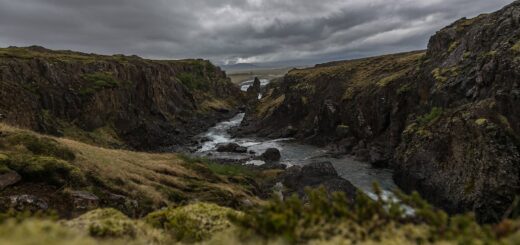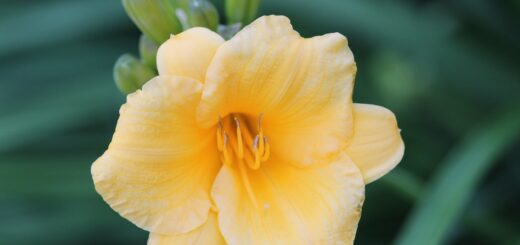The Art of Stunning Landscape Photography: Tips and Techniques
Landscape photography is a captivating art form that allows us to capture the breathtaking beauty of the natural world. Whether it’s the vastness of a mountain range, the serenity of a still lake, or the vibrant colors of a sunset, landscape photography has the power to transport us to incredible destinations and evoke a sense of wonder.
In this article, we will explore the art of stunning landscape photography and uncover valuable tips and techniques to help you capture the essence of the great outdoors. From the latest industry trends to insights from award-winning photographers, we’ll delve into the world of landscape photography to inspire and empower both beginners and seasoned enthusiasts.
So grab your camera, pack your gear, and join us on this journey to master the art of landscape photography. Get ready to unleash your creativity and capture images that will leave viewers in awe of the world’s natural wonders.
Current Trends in Landscape Photography
Landscape photography has always been a popular genre among photographers, but it is constantly evolving to keep up with the latest trends and technologies. Whether it’s the use of AI to enhance images or the adoption of sustainable practices, there are many exciting developments shaping the landscape photography industry today. Let’s explore some of the current trends that photographers are embracing to capture the beauty of nature in new and innovative ways.
AI-Enhanced Photography
One major trend in landscape photography is the use of artificial intelligence (AI) technology to enhance images. AI algorithms can analyze and optimize various elements of a photo, such as exposure, color grading, and sharpness. This technology not only saves photographers time in post-processing but also helps them achieve stunning results with minimal effort. By leveraging AI-powered software and tools, photographers can enhance the visual impact of their landscape images and bring out the finest details.
Sustainable Photography Practices
In recent years, there has been a growing emphasis on sustainable photography practices within the landscape photography community. Photographers are increasingly aware of their impact on the environment and are taking steps to minimize it. This includes respecting nature and wildlife, practicing leave-no-trace principles, and promoting conservation efforts through their work. By adopting sustainable photography practices, photographers can contribute to the preservation of natural landscapes for future generations to enjoy.
Virtual Reality (VR) and Augmented Reality (AR) Experiences
The rise of virtual reality (VR) and augmented reality (AR) technologies has also made its way into landscape photography. Photographers are now using VR and AR to create immersive experiences for viewers, allowing them to virtually explore stunning natural landscapes from the comfort of their own homes. These technologies enhance the storytelling aspect of landscape photography, enabling photographers to transport their audience to breathtaking locations and evoke powerful emotions through their images.
Use of Drones
Drones have revolutionized landscape photography, offering photographers a new perspective from above. With their ability to capture stunning aerial views, drones have become an indispensable tool for landscape photographers. They allow photographers to capture unique angles, showcase the scale and grandeur of landscapes, and add a sense of depth to their images. Drones provide photographers with limitless creative possibilities, opening up new horizons in landscape photography.
Rise of Mirrorless Cameras
Mirrorless cameras have been steadily gaining popularity in the world of landscape photography. Offering lighter weight and more compact options compared to traditional DSLRs, mirrorless cameras are a favorite choice among photographers who value mobility and convenience. With advancements in technology, mirrorless cameras now offer exceptional image quality and performance, making them a viable option for landscape photographers who want to travel light without compromising on image quality.
Now that you’re aware of the current trends in landscape photography, you might be wondering which camera would be the right choice for your own landscape photography endeavors. Check out this guide to the best cameras for landscape photography to explore some top recommendations and find the perfect camera to capture nature’s beauty.
International Landscape Photographer of the Year Awards
When it comes to capturing the beauty of our natural world, few art forms can rival landscape photography. The International Landscape Photographer of the Year Awards celebrates the incredible talents of photographers from around the globe who have a keen eye for capturing the essence and grandeur of our planet’s diverse landscapes.
Promotion of Realism and Authenticity
One of the key aspects that sets the International Landscape Photographer of the Year Awards apart is its emphasis on promoting realism and authenticity in photography. In a world where photo editing tools and filters can transform images into something otherworldly, this competition recognizes the importance of staying true to the essence of the landscape.
By highlighting the beauty of natural landscapes without excessive editing or manipulation, the International Landscape Photographer of the Year Awards encourages photographers to focus on their composition and storytelling abilities. This commitment to realism ensures that the images we see truly reflect the magic and wonder of the places they depict.
Top Winning Landscape Photographs
Each year, the International Landscape Photographer of the Year Awards showcases a breathtaking collection of top-winning landscape photographs. These images represent the very best of what nature photography has to offer, capturing both well-known landmarks and hidden gems in stunning detail.
Among the standout winners of past competitions are photographs like “Under the Tuscan Sunset” and “Daybreak at Alpe di Siusi.” These images transport viewers to incredible destinations, showcasing the unique features and atmospheres of each location. From the warm and vibrant colors of an Italian sunset to the serene stillness of a misty morning in the mountains, these photographs evoke a sense of wonder and invite us to explore the world through the eyes of the photographers.
So, whether you’re an avid photographer or simply appreciate the beauty of nature, the International Landscape Photographer of the Year Awards is an event that should be on your radar. With its commitment to promoting realism, authenticity, and the celebration of our planet’s stunning landscapes, this competition showcases the power of photography to capture the magic of the natural world.
Conclusion
In conclusion, landscape photography is an art form that continues to evolve and thrive in the modern digital age. With advancements in technology and the rise of innovative techniques, photographers are able to capture breathtaking landscapes like never before. From AI-enhanced photography to sustainable practices and virtual reality experiences, the field is constantly pushing boundaries and exploring new possibilities.
The International Landscape Photographer of the Year Awards showcase the incredible talent and vision of photographers around the world. These prestigious awards not only promote realism and authenticity in landscape photography but also provide inspiration for photographers looking to elevate their work to the next level.
If you’re interested in delving into the world of landscape photography or simply looking for tips and inspiration, Wim Arys Photography is a valuable resource. Wim Arys, a renowned portrait and landscape photographer, shares his expertise, reviews, and tutorials on his website, wimarys.com. With a focus on Sony mirrorless cameras, you’ll find a treasure trove of knowledge to enhance your photography projects. Visit wimarys.com to discover a wealth of articles, camera reviews, and tips to bring out the best in your landscape photography.
Remember, the key to stunning landscape photography lies not only in technical skill but also in capturing the essence and beauty of the natural world. So grab your camera, explore new techniques, and let your creativity soar as you embark on your own landscape photography journey!
Frequently Asked Questions
- What are some essential tips for capturing stunning landscape photos?
Some essential tips for capturing stunning landscape photos include: 1. Planning your shot and scouting locations beforehand, 2. Utilizing the golden hour for soft and warm light, 3. Using a tripod for stability, 4. Incorporating leading lines and foreground interest, and 5. Experimenting with different compositions and angles.
- What camera settings should I use for landscape photography?
For landscape photography, it is recommended to use a small aperture (high f-number) for a larger depth of field, a low ISO to reduce noise, and a slower shutter speed for capturing motion. However, the ideal settings may vary depending on the lighting conditions and desired outcome, so experimentation is key.
- What equipment do I need for landscape photography?
While the equipment needed for landscape photography can vary, some essential items include a DSLR or mirrorless camera, a wide-angle lens, a sturdy tripod, a polarizing filter for reducing reflections, a remote shutter release for longer exposures, and a backpack or camera bag for carrying everything.
- How can I enhance my landscape photos during post-processing?
During post-processing, you can enhance your landscape photos by adjusting exposure, contrast, and colors, applying selective edits to accentuate certain areas, removing distractions and blemishes, and sharpening the image. However, it’s important to maintain a natural and realistic look, avoiding excessive editing or manipulation.
- Are there any specific composition techniques for landscape photography?
Yes, some popular composition techniques for landscape photography include the rule of thirds, leading lines, framing, foreground-background balance, and creating depth. These techniques help create visually appealing and balanced compositions that draw the viewer’s attention into the scene.



